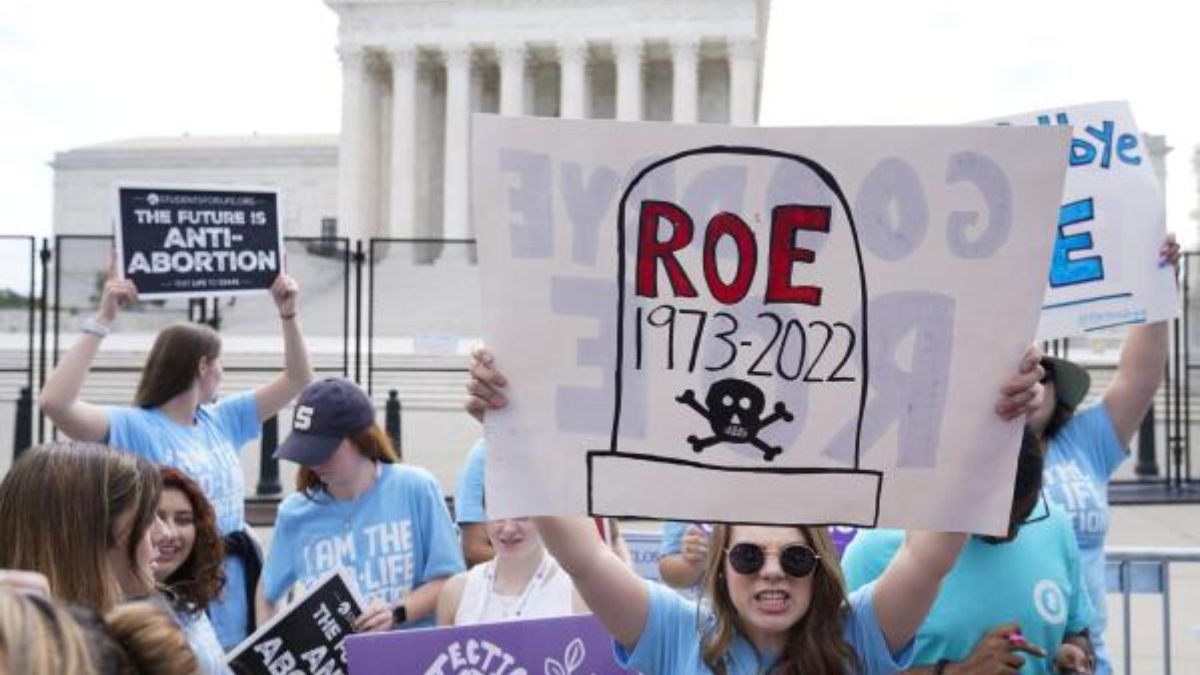In what went on to shock the United States and the world, the Supreme Court of the United States on June 24, 2022, overturned the landmark decision of Roe vs Wade. This decision eliminated the federal constitutional right to abortion. This ruling profoundly reshaped reproductive rights in the United States, returning the authority to regulate or ban abortion to individual states.
If you are a history geek who loves to learn about important events from the past, Firstpost Explainers’ ongoing series, History Today will be your one-stop destination to explore key events.
On this day in 2018, Saudi Arabia legally permitted women to drive for the first time marking the culmination of years of advocacy by women’s rights activists and a significant reform in the ultraconservative kingdom.
Here is all that took place on this day across the world.
US overturned Roe v Wade
The United States Supreme Court took a huge decision and overturned Roe v Wade , the landmark 1973 decision that had guaranteed the constitutional right to abortion for nearly 50 years. The ruling came through the case of Dobbs v Jackson Women’s Health Organisation, where the court upheld a Mississippi law banning most abortions after 15 weeks of pregnancy. This ruling profoundly reshaped reproductive rights in the United States, returning the authority to regulate or ban abortion to individual states.
In a 6–3 decision, the court’s conservative majority ruled that the US constitution does not confer a right to abortion, effectively returning the power to regulate abortion laws to individual states. The majority opinion, written by Justice Samuel Alito, stated that “Roe was egregiously wrong from the start.”
The ruling marked one of the most significant reversals in US constitutional law in decades and triggered an immediate and intense national reaction. In many conservative states, so-called “trigger laws” went into effect, banning or severely restricting abortion access. Meanwhile, liberal states moved to strengthen abortion protections. Abortion rights supporters called it a dangerous step backwards for women’s autonomy, privacy and healthcare. Conversely, anti-abortion advocates hailed the ruling as a long-awaited victory for the protection of unborn life.
Impact Shorts
More ShortsPresident Joe Biden criticised the ruling, calling it a “tragic error” and vowing to fight to restore reproductive rights through legislation, though such efforts faced strong political opposition. International reactions were also swift, with many global leaders expressing concern about the rollback of women’s rights in one of the world’s most influential democracies.
Women in Saudi Arabia were allowed to drive for the first time
June 24, 2018, was a historic moment for the women in Saudi Arabia as women were legally permitted to drive for the first time. This achievement was the result of years of dedicated work by women’s rights advocates, signalling a substantial shift in the deeply conservative nation.
For decades, Saudi Arabia had been the only country in the world to forbid women from driving, a restriction that severely limited their mobility and independence. The ban was not enshrined in formal law but was enforced through societal customs and interpretations of religious edicts. Activists had long campaigned against this prohibition, with notable acts of defiance, such as a protest in 1990 where 47 women drove in Riyadh, leading to their arrest and professional repercussions. Subsequent campaigns, often utilising social media, kept the issue in the public eye.
The change was initiated by a royal decree issued by King Salman in September 2017, which announced that women would be allowed to obtain driving licenses starting in June 2018. This decision was part of Crown Prince Mohammed bin Salman’s “Vision 2030” reform plan, aimed at modernising the country’s economy and society.
As the clock struck midnight on June 24, 2018, women across Saudi Arabia, many having already obtained their new licenses, eagerly took to the roads. The event was met with widespread celebration both within the kingdom and internationally. While the lifting of the driving ban was a monumental step forward, advocates continued to highlight the need for further reforms to end the male guardianship system, which still restricts many aspects of women’s lives.
This Day, That Year
Julia Gillard was sworn in as Australia’s first female prime minister on this day in 2010.
On this day in 1859, the Battle of Solferino, the last engagement of the second War of Italian Independence, was fought in Lombardy.
In 1497, John Cabot became the first European to set foot in North America since the Vikings.
)